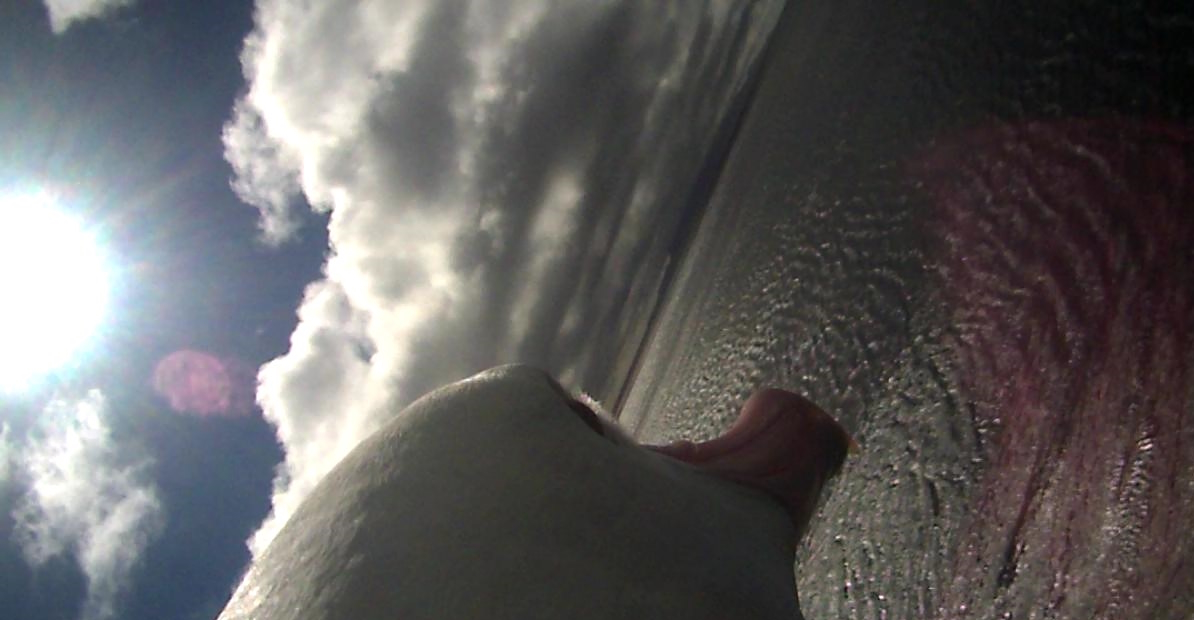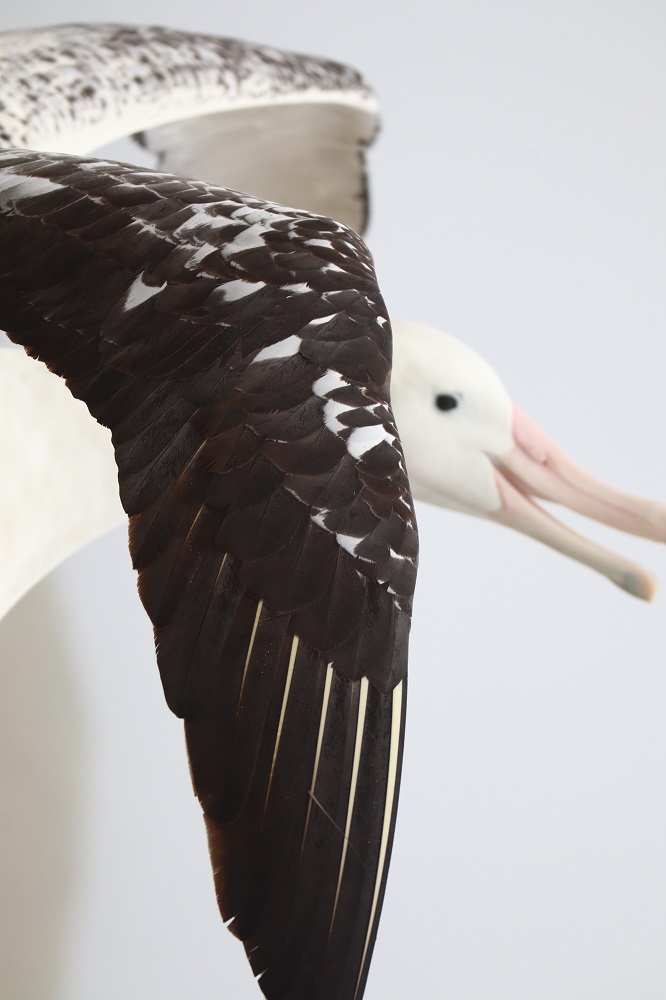
Bird's-eye view - A miniature video camera mounted on the back of a Wandering Albatross gives new insight into their flight
Stefan Schoombie (Centre for Statistics in Ecology, Environment and Conservation, University of Cape Town, South Africa) and colleagues have published open access in the journal Marine Ecology Progress Series on dynamic soaring by globally Vulnerable Wandering Albatrosses Diomedea exulans utilizing an array of sophisticated bio-logging devices.

Look out below! Wandering Albatrosses are incredible flyers, but their landings are less graceful, often resulting in comical scenes for onlookers from below
The paper’s abstract follows:
“Wandering albatrosses Diomedea exulans are among the largest flying birds. Their energy-efficient dynamic soaring flight allows them to travel large distances by exploiting the gradient in wind strength above the sea surface. We used bio-logging devices to study the dynamic soaring flight behaviour of wandering albatrosses, deriving roll (bank) angles from video and tri-axial magnetometers, and flapping events from tri-axial accelerometers. Albatrosses mostly experienced westerly winds coming from their left during outbound flights from their colonies and from their right when returning. They compensated for differences in wind speed by varying their roll angles and predominantly turning into the wind, resulting in a net displacement that was perpendicular to the wind. Flapping flight was influenced by wind speed and direction, with birds spending more time flapping in light winds and in head winds. Flapping often occurred at the upper turn of the dynamic soaring cycle, a stage previously considered devoid of flapping. There was also evidence of sexual differences in flight behaviour, with females flapping less than males. Males almost exclusively take off into head winds, whereas females utilized cross winds as well. These results add to our knowledge of dynamic soaring and show how albatrosses react to their wind fields at a fine scale.”
 Comfort in the air. Wandering Albatrosses uses their large wingspan to glide through the air using a flight mode called dynamic soaring, where they expend very little energy and can travel immense distances in favourable wind. However, when the wind is light they have to flap their wings from time to time, which uses a lot more energy
Comfort in the air. Wandering Albatrosses uses their large wingspan to glide through the air using a flight mode called dynamic soaring, where they expend very little energy and can travel immense distances in favourable wind. However, when the wind is light they have to flap their wings from time to time, which uses a lot more energy
With thanks to Stefan Schoombie for his photographs and for writing the captions.
Reference:
Schoombie, S., Wilson, R.P. & Ryan, P.G. 2023. Wind driven effects on the fine-scale flight behaviour of dynamic soaring wandering albatrosses. Marine Ecology Progress Series doi.org/10.3354/meps14265.
Note: Now retired as ACAP Information Officer to an emeritus position, I am largely restricting my contributions to the Agreement to the ACAP Monthly Missives series, completion of the ACAP Species Infographic series, and for this year, leading in the build up to the fourth World Albatross Day on 19 June. However, from time to time I will “help out” with a post to ACAP Latest News as here, where it is a pleasure to report on a publication coming from Marion Island where I conducted and managed research on ACAP-listed species for several decades.
John Cooper, Emeritus Information Officer, Agreement on the Conservation of Albatrosses and Petrels, 25 April 2023

 English
English  Français
Français  Español
Español